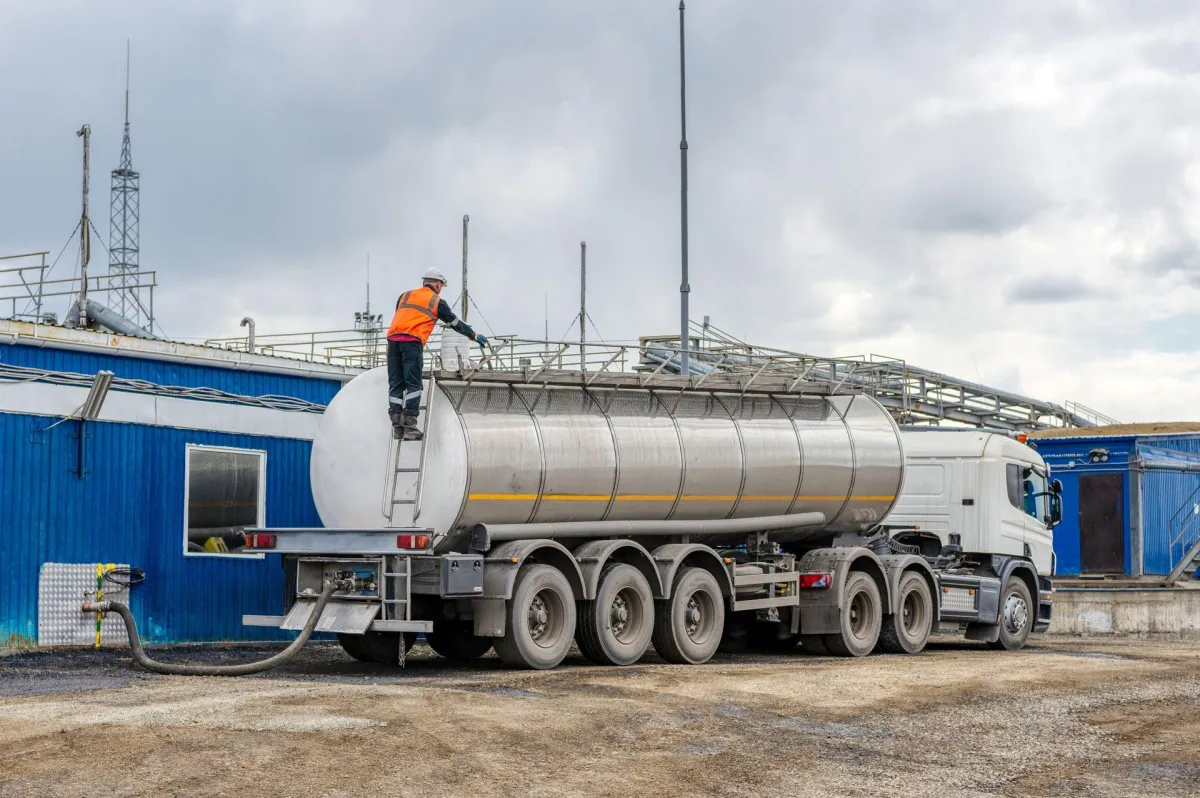Call Us Today!
Blog

The Role of Smart Sensors & IoT in Grease Trap Monitoring
For restaurants and commercial kitchens, grease trap maintenance has always been a necessary — and often messy — part of operations. Miss a cleaning, and you risk overflows, foul odors, plumbing issues, or health code violations. Clean too often, and you waste money on unnecessary service calls.
But what if you could monitor your grease trap in real-time — knowing exactly when it’s time for cleaning before a problem occurs?
That’s where smart sensors and IoT (Internet of Things) technology come in.
These innovations are transforming grease management across the food service industry. From real-time alerts to predictive maintenance, IoT-enabled grease trap monitoring helps operators reduce costs, improve compliance, and stay proactive instead of reactive.
In this article, we’ll explain:
How IoT and smart sensors work in grease trap systems
The benefits for restaurants and facilities
How to integrate this technology into your maintenance plan
Common questions about IoT grease trap monitoring
Why partnering with an experienced service provider like Grease Guys makes all the difference
What Is IoT Grease Trap Monitoring?
The Internet of Things (IoT) refers to smart devices connected through the internet that collect and transmit data. In grease management, IoT systems use sensors installed in traps or interceptors to monitor conditions like grease levels, temperature, and flow rate.
How Smart Sensors Work
Sensor Installation: A sensor is mounted inside the grease trap to measure grease thickness and liquid levels.
Data Collection: It continuously measures the accumulation of fats, oils, and grease (FOG).
Wireless Transmission: The sensor transmits real-time data to a cloud-based dashboard or mobile app.
Alerts and Reporting: When the trap approaches its capacity threshold (often 75–90%), the system sends alerts to managers or service providers.
This allows teams to schedule cleanings based on need, not guesswork — preventing both overflow emergencies and unnecessary maintenance costs.
Why Smart Sensors Are Revolutionizing Grease Management
Traditional grease trap maintenance often follows a fixed schedule — every 60 or 90 days — whether the trap needs cleaning or not. IoT systems replace this outdated model with data-driven precision.
Here’s why this technology is quickly becoming a best practice in the food service industry.
1. Real-Time Visibility
You can monitor your grease trap’s condition at any time from a smartphone, tablet, or desktop. Instant insights mean you’ll know when to act — long before backups or odors become a problem.
2. Predictive Maintenance
By tracking FOG accumulation trends, IoT systems can predict when the trap will reach capacity. This helps plan cleanings proactively and avoid overflow emergencies.
3. Cost Efficiency
Regular, fixed cleaning schedules often lead to “over-servicing” — cleaning traps that aren’t full yet. Smart monitoring helps reduce unnecessary service calls while ensuring timely cleanings when truly needed.
4. Environmental and Compliance Benefits
IoT monitoring ensures compliance with local FOG regulations by maintaining service logs and preventing discharges into the municipal sewer system. Digital records make compliance reporting simple and accurate.
5. Integration with Professional Services
Smart systems can automatically notify your grease service provider when a cleaning is needed. Companies like Grease Guys can respond quickly, ensuring you stay compliant without having to manually track maintenance schedules.
6. Peace of Mind
Perhaps the biggest benefit: fewer surprises. With automated monitoring and alerts, operators can focus on running their business instead of worrying about hidden plumbing problems.
How to Implement IoT Grease Trap Monitoring in Your Facility
Integrating smart sensors into your existing grease management routine is straightforward, especially with the right service partner. Here’s how to do it effectively.
Step 1: Evaluate Your Current System
Start by assessing your existing grease traps — their size, location (indoor vs. outdoor), and service frequency. Determine how often you experience backups, slow drains, or scheduling inefficiencies.
Step 2: Choose a Compatible Sensor System
Not all grease traps or interceptors are the same. Select an IoT sensor system designed for your trap type and size. Features to look for include:
Wireless connectivity (cellular or Wi-Fi)
Battery life of at least 1–2 years
Temperature and liquid-level monitoring
Compatibility with your grease trap service provider’s system
Step 3: Professional Installation
Have your IoT sensors installed by a licensed professional. Grease Guys can install compatible systems during a scheduled cleaning to minimize downtime.
Step 4: Set Thresholds and Alerts
Work with your service provider to set FOG-level thresholds that trigger automatic alerts. For most kitchens, this is around 75% capacity.
Step 5: Monitor and Optimize
After setup, track data for several weeks to establish patterns. You may find your trap fills faster during busy seasons or holidays — allowing for smarter scheduling year-round.
Step 6: Automate Maintenance Scheduling
Once the system is stable, integrate it with your service provider’s software. When your trap reaches threshold, it automatically sends a request for service — ensuring you never miss a cleaning.
Real-World Example: How IoT Saves Time and Money
A busy restaurant in Seattle was cleaning its grease trap every 60 days — costing hundreds of dollars per service. After installing an IoT monitoring system, data revealed that the trap only reached 75% capacity every 100 days.
By switching to data-driven scheduling, the restaurant:
Reduced annual cleaning costs by 30%
Avoided two potential overflow incidents
Improved compliance documentation for city inspections
This is a clear example of how smart technology transforms reactive maintenance into proactive management.
Frequently Asked Questions
Do smart sensors work in all types of grease traps?
Most modern sensors are compatible with both indoor and outdoor interceptors, though installation requirements vary. Always confirm with your service provider.
How much maintenance do the sensors themselves need?
Very little. Most sensors are waterproof, battery-operated, and designed to last 1–3 years before needing replacement or recalibration.
Can IoT grease monitoring systems integrate with other restaurant tech?
Yes. Many systems offer API integrations with building management software or kitchen maintenance dashboards.
Will I still need manual inspections?
Yes, but less frequently. IoT monitoring reduces manual checks while ensuring critical alerts are never missed.
Is IoT monitoring expensive to implement?
The cost depends on your system size and features. However, most businesses recoup their investment through fewer service calls and reduced downtime within the first year.
Conclusion
The rise of smart sensors and IoT in grease trap monitoring represents a major leap forward for the food service industry. With real-time data, predictive maintenance, and seamless integration, restaurant owners can finally achieve balance — cutting costs while improving safety, compliance, and sustainability.
At Grease Guys, we’re committed to helping Washington businesses adopt modern solutions that simplify grease management. From traditional cleaning and maintenance to advanced sensor integration, our team ensures your kitchen stays efficient and compliant every day of the year.
Ready to modernize your grease management system? Contact Grease Guys today to learn more about IoT monitoring options and get a custom solution tailored to your facility’s needs.
OUR SERVICES
TIPS & ARTICLE
GET IN TOUCH
Phone: (855) 227-6060
Email: [email protected]
Address: 3188 Road M.2 NE, Moses Lake, WA 98837
Business Hours:
Mon - Sun: Open 24 Hours
AREAS WE SERVE
© All Rights Reserved • Grease Guys, LLC | Terms of Use | Privacy Policy
